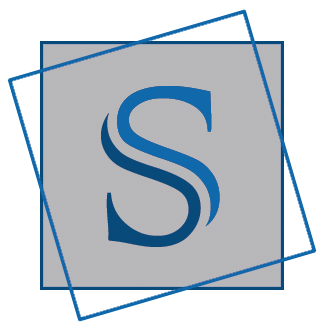In today’s rapidly evolving business landscape, the amalgamation of Information Technology (IT) and Human Resources (HR) is proving to be indispensable for organizational success.
Central to this integration is the adoption and utilization of Human Resource Information Systems (HRIS). HRIS, often interchangeably referred to as Human Resource Management System (HRMS) software, is fundamentally transforming how HR departments function, streamline operations, and efficiently manage workforce data.
Let’s delve deeper into the evolving synergy between IT and HR through the lens of HRIS.
What is HRIS?
Before delving into the symbiotic evolution of IT and HR, it’s imperative to grasp the essence of HRIS. HRIS stands as a HR software solution that harmonizes HR activities and processes with cutting-edge information technology.
Serving as a centralized repository, HRIS facilitates the seamless management of employee information, payroll, benefits administration, recruitment, performance evaluations, and beyond.
Essentially, HRIS serves as the backbone that automates and integrates diverse HR functions, thereby empowering organizations to make informed, data-driven decisions and bolster overall operational efficiency.
The Role of IT in the Evolution of HR
1. Automation and Process Optimization
At the forefront of HR evolution lies IT’s pivotal role in automating and optimizing processes through HRIS. By embracing HRIS, routine administrative tasks such as employee data management, payroll processing, and time tracking are seamlessly automated, liberating HR professionals to channel their efforts towards strategic endeavors such as talent management and fostering employee engagement.
Furthermore, the automation capabilities of HRIS not only streamline processes but also enhance accuracy and reduce the likelihood of errors. This not only saves time but also ensures compliance with regulatory requirements and organizational policies.
For instance, automated payroll processing minimizes discrepancies and ensures timely disbursement of salaries, contributing to employee satisfaction and morale.
2. Fortifying Data Security and Regulatory Compliance
In an era where data security and regulatory compliance reign supreme, IT stands as the vanguard, ensuring that HRIS platforms adhere to stringent security protocols and regulatory requisites. Through the implementation of robust cybersecurity measures and encryption techniques, IT fortifies sensitive employee data stored within HRIS, thereby mitigating the perils associated with data breaches and ensuring steadfast compliance with regulations such as GDPR (General Data Protection Regulation).
Moreover, IT plays a crucial role in conducting regular audits and assessments to identify vulnerabilities within HRIS and implement remedial measures promptly. By staying abreast of evolving cybersecurity threats and regulatory changes, IT teams safeguard the integrity and confidentiality of employee data, fostering trust and confidence among stakeholders.
3. Facilitating Seamless Integration
IT serves as the facilitator in seamlessly integrating HRIS with other pivotal enterprise systems such as Enterprise Resource Planning (ERP), Customer Relationship Management (CRM), and Learning Management Systems (LMS). This cohesive integration fosters cross-functional data exchange, augments operational efficiency, and furnishes a comprehensive organizational data panorama, thereby empowering stakeholders with insights crucial for astute decision-making.
Integration with ERP systems, for instance, enables seamless synchronization of employee data with financial and operational modules, facilitating resource planning and allocation. Similarly, integration with CRM systems empowers HR professionals with holistic insights into employee interactions and customer relationships, facilitating personalized engagement strategies and enhancing customer satisfaction.
The Evolution of HR through HRIS
1. Strategic Human Resource Management
Gone are the days when HR merely played a perfunctory administrative role. With HRIS furnishing HR professionals with actionable insights and analytics, HR has metamorphosed into a strategic partner in organizational ascendancy.
Leveraging the data-driven insights proffered by HRIS, HR departments adeptly align workforce strategies with overarching business objectives, discern talent lacunae, and nurture a culture of perpetual improvement.
Strategic HR management facilitated by HRIS entails predictive analytics, workforce planning, and talent optimization initiatives. By harnessing predictive analytics, HR professionals can anticipate future talent requirements, identify skill gaps, and devise proactive recruitment and training strategies.
Additionally, HRIS enables comprehensive workforce planning by providing real-time visibility into employee demographics, performance metrics, and succession pipelines, thereby facilitating informed decision-making and resource allocation.
2. Elevating Employee Experience
Beyond benefiting HR professionals, HRIS redounds to the enrichment of the overall employee experience. Self-service portals and mobile applications integrated with HRIS empower employees to effortlessly access pertinent HR information, proffer leave requests, update personal particulars, and partake in training regimens with utmost convenience.
This engenders transparency, fosters robust communication channels, and augments employee contentment, culminating in elevated retention rates and heightened productivity levels.
Furthermore, HRIS fosters personalized employee experiences through tailored training and development programs, career pathing initiatives, and recognition mechanisms. By leveraging HRIS insights into individual preferences, competencies, and aspirations, organizations can craft bespoke employee journeys that foster engagement, loyalty, and professional growth.
This not only enhances employee satisfaction but also cultivates a culture of continuous learning and development, driving organizational performance and competitiveness.
3. Revolutionizing Talent Acquisition and Management
In the fiercely competitive terrain of talent acquisition, HRIS emerges as a catalyst for expeditious recruitment and adept talent management. From scouting potential candidates to orchestrating seamless onboarding processes and conducting performance evaluations, HRIS streamlines the entire gamut of the talent lifecycle.
Armed with advanced features such as applicant tracking systems (ATS) and predictive analytics, HR departments adeptly identify top-tier talent, truncate time-to-hire, and nurture employee development trajectories conducive to sustained organizational prosperity.
Moreover, HRIS facilitates proactive talent management initiatives such as succession planning, career pathing, and competency mapping. By maintaining comprehensive talent profiles and performance records, HRIS enables HR professionals to identify high-potential employees, cultivate leadership pipelines, and foster career advancement opportunities.
Additionally, HRIS empowers employees with self-assessment tools and developmental resources, enabling them to take ownership of their career trajectories and align their aspirations with organizational goals.
Future Trends in HR Technology
The future of HR technology is promising, with advancements such as artificial intelligence (AI), machine learning, predictive analytics, and chatbots reshaping the HR landscape. These innovations will further optimize HR processes, personalize employee experiences, and drive organizational success. And the good part is, HRMS software companies are already on the way for it.
Conclusion
The convergence of IT and HR through Human Resource Information Systems (HRIS) heralds a seismic paradigm shift in the organizational realm. As technology continues its inexorable march forward, HRIS will assume an increasingly pivotal role in propelling strategic HR initiatives, augmenting employee experience, and optimizing organizational performance.
FAQs about HRIS:
How does HR software differ from traditional HR methods?
Unlike traditional HR methods that rely heavily on manual processes and paperwork, HR software automates tasks, centralizes data, and provides analytics insights, enabling HR professionals to make data-driven decisions and improve overall efficiency.
Can HRIS integrate with existing IT systems?
Yes, HRIS can integrate with existing IT systems such as ERP, accounting software, and communication tools. This integration ensures seamless data flow across various departments, eliminating the need for manual data entry and reducing errors.
How can HRIS enhance the employee experience?
HRIS enhances the employee experience by providing self-service portals, mobile apps, and personalized communication channels. Employees can access information, submit requests, and participate in training programs conveniently, leading to higher satisfaction and engagement levels.

